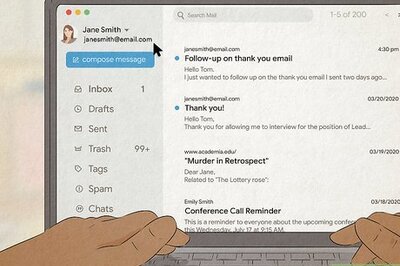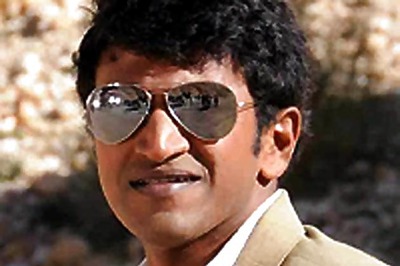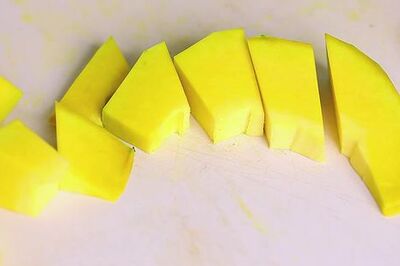
views
What is dry humor?
Dry humor is comedy that tells witty jokes with a straight, serious face. People who use dry humor make witty jokes, often about serious or boring topics, while keeping their face, body language, and tone of voice completely expressionless. The straight-faced (also called "deadpan") delivery of the joke, contrasted with the subtle, understated humor, is what gets their listeners to chuckle. Dry humor can sometimes be misinterpreted as insults rather than jokes. That's why not everyone "gets" dry humor. But those who do can't get enough of it!
Dry Humor Characteristics
Deadpan delivery Deadpan is a style of comedy delivery that involves making a joke while keeping a straight face. The person joking doesn't laugh, smile, or react much to their own joke, or, if they're in a movie or a TV series, to other characters. Instead, they rely on the absurdity or irony of their statement or the things happening around them to make their audience laugh.
Wit The Merriam-Webster Dictionary defines wit as "clever or apt humor" and "astuteness of perception of judgment." Basically, to be witty means to tell smart, intelligent jokes that you might have to think about for a second to understand. It's also a signature characteristic of dry humor.
Irony Irony is when people expect one thing to happen, but the opposite happens instead. People who use dry humor often make observations about ironic events or situations to be funny. If done right, you can even joke about the irony of a tragedy or a controversial topic and make people laugh about it. It amuses them because they aren't expecting it, so it takes them by surprise (although some people might get offended instead of laugh).
Context Whether you're using dry humor or some other type of comedy, context is often key to getting a laugh. If, for example, you want to make a dry joke about politics, it may help to stick to current affairs so your audience is more likely to understand what you're talking about. Relying on the audience's knowledge also enables you to make wittier, subtler jokes about everything from stereotypes to social mores to whatever's trending on TikTok.
Lack of physical comedy Some types of comedy, like slapstick, use silly physical movements, expressions, and props to get a laugh out of the audience. But dry humorists don't use much, if any, physical comedy. Their sketches and jokes are funny precisely because of their lack of emotion during delivery.
Dry Humor Examples
"The Office," a sitcom with no laugh track, exemplifies deadpan delivery. The show is funny because of the antics of the main characters, especially Steve Carell's character, Michael Scott. Other characters, like John Krasinski's Jim Halpert, almost never laugh or smile at the silly things they witness. Usually, their only reaction is to glance at the camera, as if checking to make sure the audience is witnessing the same thing they are.
Comedian-writer Joe Mande shares a dry joke that was coined by his dad. Mande, who is also the script writer and producer on popular comedy series like Parks and Recreation, Modern Family, and The Good Place, says his favorite joke is this witty line from his dad: "Two cannibals are eating a clown, and one looks at the other and says, 'Does this taste funny to you?'"
One of Bo Burnham’s classic jokes is a great example of irony and dry humor. Burnham sets up the punchline by mentioning that he loves the zodiac and is a Leo. Then he says that his grandmother was a Cancer, and that the irony was that she was killed by a giant crab. The audience expected him to say that his grandmother died from cancer. So, they were surprised into laughter when he said "a giant crab" in reference to the symbol for the Cancer zodiac.
Watch SNL’s "The Weekend Update" to see context and dry humor at work. During every new SNL episode, comedians Colin Jost and Michael Che pretend to be news anchors delivering remarks on the latest world events. In an episode that aired on May 11, 2025, they opened "The Weekend Update" segment with a joke about the newly elected Catholic pope: "Well, the Catholic Church has elected the first-ever pope from America, and as an American Catholic, I could not be more proud, which is a sin, and now I'm ashamed." The joke relies on the audience's awareness of two things: the new pope and the fact that pride is one of the seven deadly sins in Catholicism.
Watch Nate Bargatze's "Washington's Dream" to see how dry humorists move. In this hilarious SNL sketch, Bagatze delivers a mock-serious monologue as George Washington, the first president of the United States, about American terms of measurement. You'll notice he uses very little physical comedy, right down to a lack of expression on his face, but the audience still eats it up!
How to Use Dry Humor
Keep your face, voice, and body language expressionless. To develop your dry humor, master the art of the straight face. Smiling or giggling at your own jokes makes this form of comedy less effective. So does making expressive gestures like handwaving or jumping around, using a lot of props like puppets, or having a strong emotion in your voice. Remember, less is more!
Become skilled at wordplay. Being an academic definitely isn't required for dry comedy, but it does help to have a wide vocabulary and understand what a lot of words mean. This way, you can make witty observations about a lot of different topics, no matter what absurd situation or irony you're pointing out. EXPERT TIP Kendall Payne Kendall Payne Writer, Director, & Stand-up Comedian Kendall Payne is a Writer, Director, and Stand-up Comedian based in Brooklyn, New York. Kendall specializes in directing, writing, and producing comedic short films. Her films have screened at Indie Short Fest, Brooklyn Comedy Collective, Channel 101 NY, and 8 Ball TV. She has also written and directed content for the Netflix is a Joke social channels and has written marketing scripts for Between Two Ferns: The Movie, Astronomy Club, Wine Country, Bash Brothers, Stand Up Specials and more. Kendall runs an IRL internet comedy show at Caveat called Extremely Online, and a comedy show for @ssholes called Sugarp!ss at Easy Lover. She studied at the Upright Citizens Brigade Theatre and at New York University (NYU) Tisch in the TV Writing Certificate Program. Kendall Payne Kendall Payne Writer, Director, & Stand-up Comedian When brainstorming jokes, write what you know. A lot of people overthink when they're trying to write comedy. But the easiest way to get started is to write what you know from living life.
Learn who will appreciate dry humor. We mentioned before that dry humor isn't funny to everyone. In fact, some dry jokes are so subtle, people often take them as insults instead of attempts at lighthearted comedy! So, be careful who you say them around. Make sure your audience understands that you're not intending to hurt their feelings or downplay a bad situation.
Learn how to be self-deprecating. Self-deprecation is being critical of yourself and downplaying your achievements, either to be humble or to make others laugh. Comedians who use dry humor often self-deprecate by recalling an embarrassing moment from their past or joking about their faults. This technique helps dry humor sound less pretentious and rely less on insulting other people. If you have a tendency to be late for everything, for example, you could say something like, "I'd say I'll see you in the morning, but then I'd have to be here on time."
Dry Humor vs. Sarcasm vs. Cynicism vs. Satire
Sarcasm Sarcasm involves saying the opposite of how you really feel to highlight how strong your feelings actually are. The difference between sarcasm and dry humor is that the speaker isn't usually sarcastic to be funny. They're sarcastic because they want to complain, be critical, or insult someone else. Sarcasm can still be funny, as well as useful—it helps people express and process their negative feelings without resorting to aggression. But use it cautiously, especially if you want to avoid sounding rude. An example of a sarcastic comment is when someone cuts in front of you in a grocery store aisle, and you say, "That's fine, I wasn't planning on going that way anyway." This statement isn't actually true—it's not fine that they cut you off, and you were planning on taking your cart down that aisle. But saying the opposite helps you express your frustration, even if you only mutter it to yourself. Another popular way to be sarcastic is to say the phrase, "Yeah, right," when you hear something you don't believe is true or that will ever happen. For example, if your friend tells you they found Taylor Swift concert tickets online for $10, you might say, "Yeah, right. I definitely feel like getting scammed today."
Cynicism Cynicism often goes hand-in-hand with dry humor, but it's not the same. It's actually the belief or philosophy that all humans are driven by greed and selfishness. A cynic is someone who's lost trust in humanity and the inherent goodness in other people. Someone who tells cynical jokes isn't necessarily a cynic in their worldview, but they still find comedic relief in joking about hopelessness in politics and other dark topics. Although he doesn't refer to himself as a cynic, George Carlin is a good example of a comedian who uses cynicism in his stand-up routines. Carlin’s jokes about social issues and politics are bold and brash, and quite often pessimistic. His audience relates to his frustrations and skepticism about the world, and they experience a sense of catharsis (a release of strong emotions) from listening to him expose the harsh reality of the world through comedy. Famous George Carlin quote: "Here's all you have to know about men and women: women are crazy, men are stupid. And the main reason that women are crazy is that men are stupid."
Satire Satire is a type of comedy that uses exaggeration to show how ridiculous and silly they are. It often relies on dry humor characteristics like wit and irony, but the goal of satire is always to poke fun, humiliate, or humble someone or something. Like dry humor, satire makes people laugh, but comedians also sometimes use it to bring important issues to their audience's attention. The Truman Show (1998) starring Jim Carrey shows how satire can work in comedy movies. The film is about a man named Truman whose entire life since he was born has been filmed as a made-for-TV reality show. The only person who doesn't know the show isn't real is Truman himself. The Truman Show is a satire about how everyday people are hopelessly obsessed with the lives of people they see on TV (and now on social media).
Final Takeaway
Dry humor is delivering subtle, witty jokes with a deadpan manner. It relies on elements like irony, wit, and context to raise a giggle. To start using dry humor, remember that less is more when it comes to physical movement, emotions, and facial expressions. Developing a wider vocabulary will help you sound wittier and help you come up with subtler jokes. Finally, make sure your audience understands the good intention behind your jokes, so they don't mistake it for an insult.




















Comments
0 comment